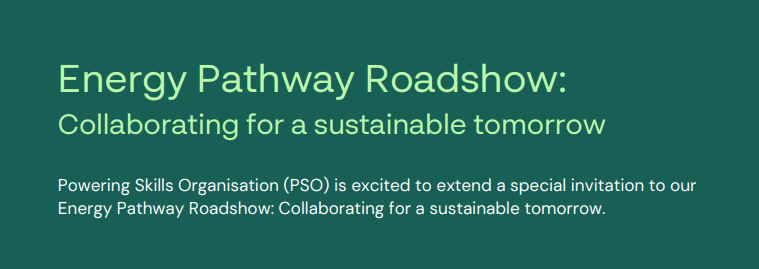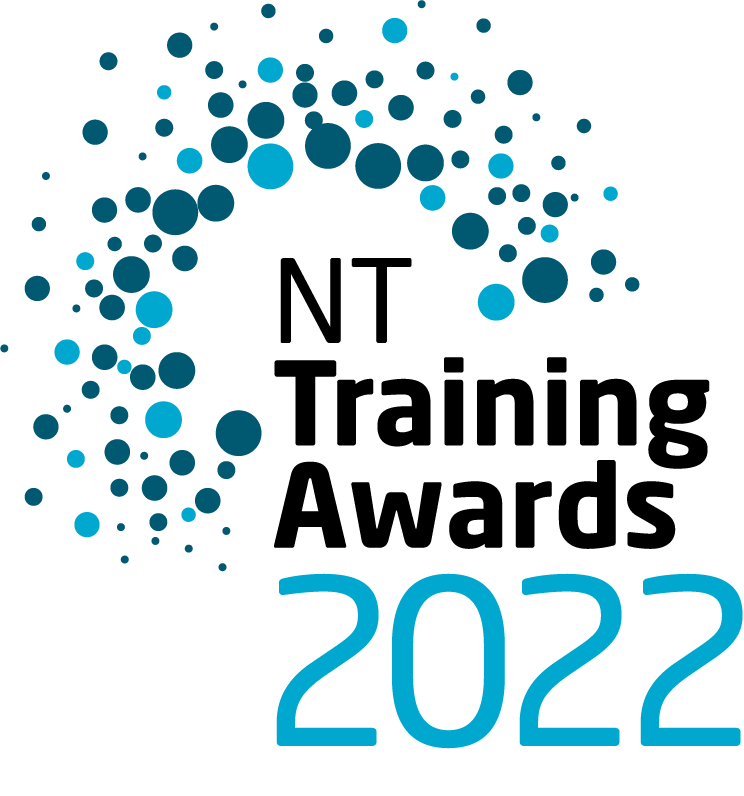Looking for skilled staff?
2 out of 3 Territory
Businesses
can’t find a
skilled workforce.
Considering a career?
Want to know which occupations are in demand in the NT?
NT Industries
Select your industry to see what ISACNT resources are available.
What’s On

In today's fast-paced job market, finding the right career opportunity can be a daunting task. The endless scrolling through various job boards, registering on multiple websites, and setting up countless job alerts can quickly become overwhelming. But what if there was a solution that simplified this process and made the job search easier and more efficient than ever before? Enter WorkerConnect, the innovative platform that's changing the game for job seekers in the Northern Territory. WorkerConnect acts as a centralised hub for job seekers across the Northern Territory, including major cities like Darwin and Alice Springs, as well as more remote regions. It takes the hassle out of the job search by aggregating job listings from various sources and presenting them all in one convenient location. Whether you're looking for a career change or just starting your job search journey, the Northern Territory Government’s WorkerConnect platform is designed to save you valuable time and effort. One of WorkerConnect's features is its ability to provide you with personalised job alerts. Imagine receiving notifications directly to your inbox whenever a job opportunity that matches your preferences becomes available. No more constantly refreshing your browser or missing out on exciting opportunities. Simply set your criteria – including job type, location, and industry – and let WorkerConnect do the work for you. Stay ahead of the competition, stay informed, and never miss out on a new opportunity again. WorkerConnect offers a unique opportunity for job seekers to join its talent community. Employers actively use this feature to recruit new talent. By being part of this community, job seekers can increase their chances of being noticed by employers eager to connect with motivated candidates. It's a win-win situation that opens doors to exciting possibilities for employers and job seekers alike. So, are you ready to take your job search to the next level? Visit the Northern Territory Government’s WorkerConnect Platform today: https://jobs.theterritory.com.au Simplify your job search, get noticed by NT employers, and pave the way for a brighter career future.

Developing and skilling a robust local workforce and apprenticeship and traineeship opportunities is key to strengthening the Territory’s skills base. There are currently nearly 4,000 Territorians undertaking apprenticeships and traineeships across the Northern Territory, seven of which were announced as individual category winners at the 2023 Northern Territory Training Awards on Saturday, September 2, 2023.

Shaping the Future of Mining and Automotive VET Education in the NT The Mining and Automotive Skills Alliance (AUSMASA) is making its way to Darwin and Alice Springs this month, eager to gather insights from businesses and industry professionals. The Industry Skills Advisory Council of the Northern Territory (ISACNT) is excited for the opportunity to host these events at the end of August 2023. AUSMASA represents both the mining and automotive industries as one of 10 Australian Government’s Jobs and Skills Councils (JSCs) established to provide industry with a strong, more strategic voice in ensuring the nation’s vocational education and training (VET) sector delivers better outcomes for learners and employers. As part of the events, AUSMASA's team of experts will lead interactive sessions, presenting proposed changes to Mining and Automotive VET programs and their potential nationwide impact. Whether you're an employer, association, trainer or industry professional, your active participation will drive the development of practical training programs that elevate the entire industry. Your insights are invaluable in shaping the future of industry training standards. Join AUSMASA and ISACNT in forging a path toward industry-focused education excellence. Be a part of 'The Journey' and register below by 23 August 2023 to attend. Event details – Darwin Date: 29 August 2023 Location: Darwin, ISACNT Boardroom Address: The Avenue 12 Salonika Street, Parap NT Time: 9.30am (Mining) or 12.30pm (Automotive) RSVP: RSVP by 23 August 2023 Register below: Mining: https://isacnt_ausmasa_mining_darwin.eventbrite.com.au Automotive: https://ISACNT_ausmasa_automotive_darwin.eventbrite.com.au Event details – Alice Springs Date: 31 August 2023 Location: Alice Springs, CADO office Address: 55 Todd Mall, Alice Springs Time: 9.30am (Mining) or 12.30pm (Automotive) RSVP: RSVP by 23 August 2023 Register below: Mining: https://ISACNT_ausmasa_mining_alicesprings.eventbrite.com.au Automotive: https://ISACNT_ausmasa_automotive_alicesprings.eventbrite.com.au Should you have any questions or require further information, reach out to ISACNT at admin@isacnt.org.au on (08) 8943 6028. For more information about AUSMASA visit The Mining and Automotive Skills Alliance (ausmasa.org.au) or subscribe to The Journey at Subscribe — The Mining and Automotive Skills Alliance (ausmasa.org.au) .

Are your students ready to step into the working world and gain invaluable hands-on experience? We're thrilled to introduce the Industry Skills and Advisory Council’s (ISACNT) Work Experience Register – the ultimate gateway to a world of exciting opportunities and meaningful placements for school students across the Northern Territory.
Articles

ASQA is developing a series of Practice Guides to assist providers in understanding our regulatory expectations under the revised Standards for Registered Training Organisations (RTOs), which will come into full effect on 1 July 2025. These Practice Guides are non-prescriptive and are designed to support providers by offering: Examples of potential actions and other relevant considerations to help demonstrate compliance with each Standard Illustrations of known risks that may impact quality outcomes Self-assurance questions to guide providers in evaluating their performance against the revised Standards The Practice Guides should be read in conjunction with the relevant legislation to ensure all regulatory requirements are met. Providers are also encouraged to consider the underlying policy intent of the revised Standards when applying them in practice. Further details on the revised Standards, including legislative requirements and policy intent, are available on DEWR website The draft Practice Guides below have been released to give the sector an opportunity to provide feedback ahead of the final versions, which are scheduled for release in April 2025. You can share your feedback on the draft Practice Guides through Submit your feedback on our draft Practice Guides Please note that these drafts have been updated to reflect the recently released legislative instruments and to incorporate early feedback received from stakeholders. Practice Guides – Outcome Standards for RTOs Quality Area 1 – Training and Assessment Training Assessment Facilities, resources and equipment Quality Area 2 – VET Student Support Feedback, complaints and appeals Information Training support Diversity and inclusion Wellbeing Quality Area 3 – VET Workforce VET Workforce Management Trainer and Assessor Competencies Quality Area 4 – Governance: Leadership and Accountability Risk Management Continuous Improvement
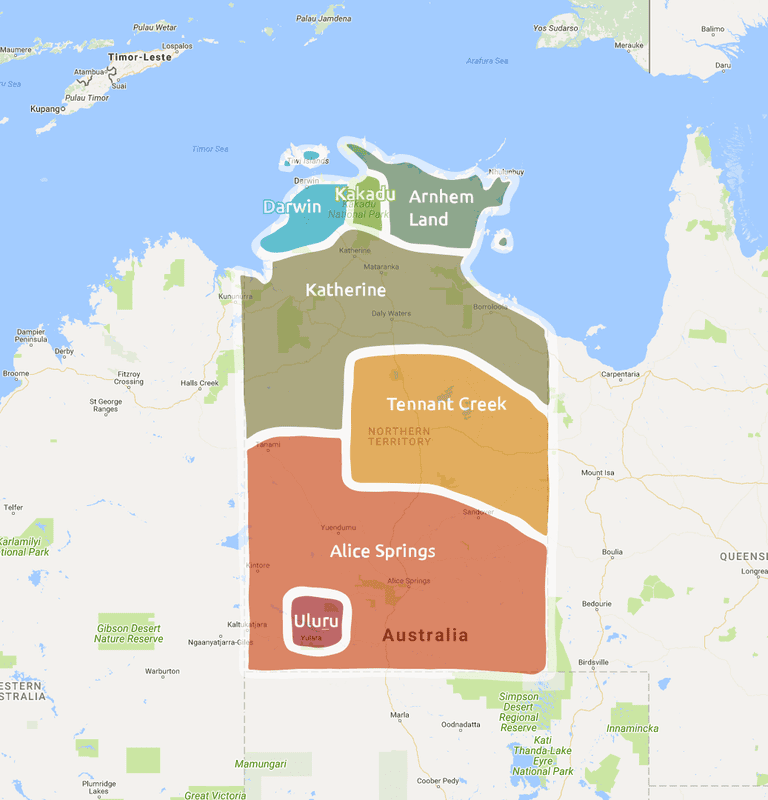
Understanding job trends and business capabilities is crucial for workforce planning and economic development, especially in remote regions. This resource provides comprehensive employment data and business insights across 28 remote towns in the Northern Territory (NT). What’s Included? ✔ Employment profiles and business capabilities in NT’s remote towns ✔ Data from the NT Remote Towns Jobs Survey (2011, 2014, 2017, 2023) ✔ Statistics from the Australian Bureau of Statistics (ABS) Who Can Benefit? ✔ Government agencies – for workforce planning and service delivery ✔ Industry leaders & businesses – to assess regional capabilities and opportunities ✔ Contractors & investors – to identify growth and employment trends This information is a valuable tool for supporting economic development, strategic planning, and decision-making across NT’s remote communities. How Was the Data Collected? The job profiles are based on face-to-face surveys with business representatives in each town. The survey methodology was developed with the support of the Australian Bureau of Statistics (ABS) to ensure accuracy and reliability . Businesses were identified through: ✔ Previous NT Remote Towns Jobs Surveys ✔ Department of Trade, Business and Innovation (DTBI) business directories ✔ Local input from remote town field officers Additional Data Sources To enhance the depth of insights, survey data is supplemented by: ✔ Community Development Programme data from the Department of Prime Minister and Cabinet ✔ ABS population and labour force statistics ✔ Vocational Education and Training (VET) data from Department of Trade, Business and Innovation (DTBI’s) training reporting database Survey Coverage & Accuracy ✔ 2011 & 2014: 21 remote towns surveyed ✔ 2017: Expanded to 28 remote towns ✔ 95%+ average response rate across surveys All participating businesses are listed in their respective town profiles. Electronically completed surveys were uploaded into a central database , with data extracts programmed to create individual town profiles . 2023 Remote Towns Workforce Snapshot The research gathered key insights about jobs, workforce trends, and employment challenges across 21 remote towns in the NT . Workforce Overview Total Population (2021 Census): 19,966 Working Age Population (15+): 14,923 Total Jobs Filled (2023): 3,534 Job Vacancies (2023): 815 (a steady increase from 370 in 2011) Who’s Working? 42.5% of workers are male – 29.8% Aboriginal vs. 12.7% Non-Aboriginal 55.7% of workers are female – 38.1% Aboriginal vs. 17.5% Non-Aboriginal Top 5 Jobs 1️ Professionals – 899 jobs 2️ Community & Personal Service Workers – 818 jobs 3️ Clerical & Admin Workers – 588 jobs 4️ Sales Workers – 370 jobs 5️ Labourers – 313 jobs Jobs by Age Group (2017 vs. 2023) Aboriginal Workers 15-24 years: 360 → 284 25-44 years: 1,810 → 1,190 45+ years: 916 → 726 Non-Aboriginal Workers 15-24 years: 76 → 51 25-44 years: 891 → 530 45+ years: 760 → 477 Private vs. Public Sector (2023) Total Businesses: 226 operating businesses Public Sector: 104 businesses → 1,475 jobs filled Private Sector: 122 businesses → 2,059 jobs filled Top 5 Industries by job filled 1. Public Administration & Safety – 996 jobs 2. Education & Training – 937 jobs 3. Retail Trade – 504 jobs 4. Health Care & Social Assistance – 458 jobs 5. Arts & Recreation – 154 jobs Job Status (2023) Permanent Jobs Filled: 2,088 (1,411 Aboriginal vs. 677 Non-Aboriginal) Temporary Jobs Filled: 1,446 (1,042 Aboriginal vs. 404 Non-Aboriginal) Key Takeaways · Job vacancies have more than doubled since 2011, showing a growing demand for skilled workers. · Fewer young people (15-24 years) are in the workforce compared to 2017. · The public sector remains a key employer in remote towns. Understanding these trends can help businesses, training providers, and policymakers support workforce development and employment opportunities in remote NT towns. Job profiles are now available for 28 towns , providing valuable data on workforce trends, job vacancies, and industry growth. Towns Covered are: Ali Curung | Alyangula | Angurugu | Borroloola | Daguragu/Kalkarindji | Docker River | Elliott | Galiwin'ku Gapuwiyak | Gunbalanya | Imanpa | Lajamanu | Maningrida | Milikapiti | Milingimbi | Mutitjulu | Ngukurr | Ntaria (Hermannsburg) | Numbulwar | Papunya | Pirlangimpi | Ramingining | Umbakumba | Utopia | Wadeye | Wurrumiyanga (Nguiu) | Yirrkala | Yuendumu These profiles help businesses, job seekers, and policymakers understand employment trends and workforce needs in remote NT. Whether you’re planning, recruiting talent, or looking for opportunities, this data is a must-have resource ! For more details please visit: Remote town job profiles | NT.GOV.AU
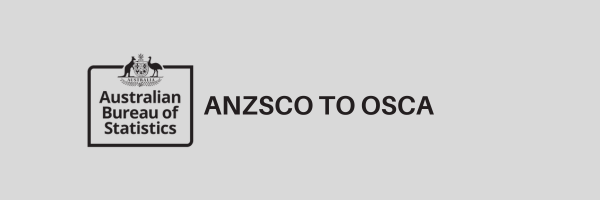
New occupation classifications The Australian Bureau of Statistics and Statistics New Zealand have announced that while maintaining comparability, each country will introduce their own tailored occupational statistical classifications. The Statistics New Zealand classification, the National Occupation List (NOL), has been released on their website. For Australia, the new classification will be called the Occupation Standard Classification for Australia (OSCA), 2024, version 1.0 and will be released on Friday 6 December 2024. Background – from ANZSCO to OSCA The Australian and New Zealand Standard Classification of Occupations (ANZSCO) has been jointly managed by the Australian Bureau of Statistics (ABS) and Stats NZ Tatauranga Aotearoa (Stats NZ) since it was first published in 2006. Careful consideration has been given to the shared custodianship of the classification between Australia and New Zealand. It has been agreed by the ABS and Stats NZ that while maintaining comparability, each country will introduce their own tailored occupational statistical classifications. This will allow each agency to maintain separate but aligned classifications, with localised adaptations to better reflect the contemporary labour market and meet stakeholder needs. The ABS and Stats NZ will continue to work closely together through our commitment to providing high quality insights and data to inform important decisions in our respective countries. We will continue to foster our collaborative and cooperative relationship to ensure our international occupation data standards are aligned. Comprehensive review and update of ANZSCO In 2022, the Australian Government announced $23.7 million funding over four years for the ABS to undertake a comprehensive update of ANZSCO and commence an ongoing maintenance program in 2025. This comprehensive review follows two targeted reviews of ANZSCO in 2021 and 2022 which resulted in Australian updates to the classification. Occupation changes during the comprehensive review have been considered in respect of the Australian labour market only. Drivers for change The decision by both Government Statisticians was made following discussions over several years noting the following: The difference between Australia’s and New Zealand’s labour markets is greater than when a joint classification began in 2006. Where this is most visible is when ANZSCO was first published in 2006, all ANZSCO occupations had a common skill level between Australia and New Zealand. Now, 56 of the current 1,076 occupations in ANZSCO have a different skill level in Australia and New Zealand. Stats NZ has been unable to participate in the targeted 2021 and 2022 Australian updates, and the comprehensive review of the classification undertaken by the ABS over the past four years. As a result, the updated classification to be released on 6 December 2024 will reflect the contemporary Australian labour market and not the New Zealand labour market. ABS and Stats NZ have identified different solutions to meet stakeholder demand. Impacts of no longer having a joint occupation classification No longer having a joint occupation classification will have impacts on the understanding and use of OSCA compared to ANZSCO. The classification will have a new name. The name of the (Australian managed) classification will be Occupation Standard Classification for Australia (OSCA). All New Zealand specific occupations will no longer have visibility as Australia does not have jurisdiction. There are seven New Zealand specific occupations in ANZSCO 2022. Occupations prominent in New Zealand only, will be aggregated according to skill level and main tasks. All references to New Zealand will be removed from: a. Occupation names b. Lead statements c. Alternative titles and specialisations 5. Te Reo Māori terminology will be removed. 6. References to the New Zealand Qualifications Framework and the New Zealand labour market more generally will no longer be present. 7. Skill level will be determined solely with reference to the Australian labour market. ANZSCO 2022 considered the skill level in Australia and New Zealand, and noted instances where these were different. Availability of ANZSCO versions will remain, along with comparability ANZSCO will continue to be available on the ABS website. Concordances between new occupation classifications and ANZSCO v1.3 will support labour market comparisons between the two countries. Impacts on other joint classifications The future of comparable, but tailored industry classifications for each country (ie. Australian and New Zealand Standard Industrial Classification (ANZSIC)) is currently being considered. Current arrangements for two other classifications which are jointly owned remain unchanged. Australian and New Zealand Standard Offence Classification (ANZSOC) Australian and New Zealand Standard Research Classification (ANZSRC) OSCA Maintenance Phase 2025 The ABS is committed to regular updates of OSCA and is developing a plan for ongoing feedback. We will continue to engage and consult on the classification during 2025.
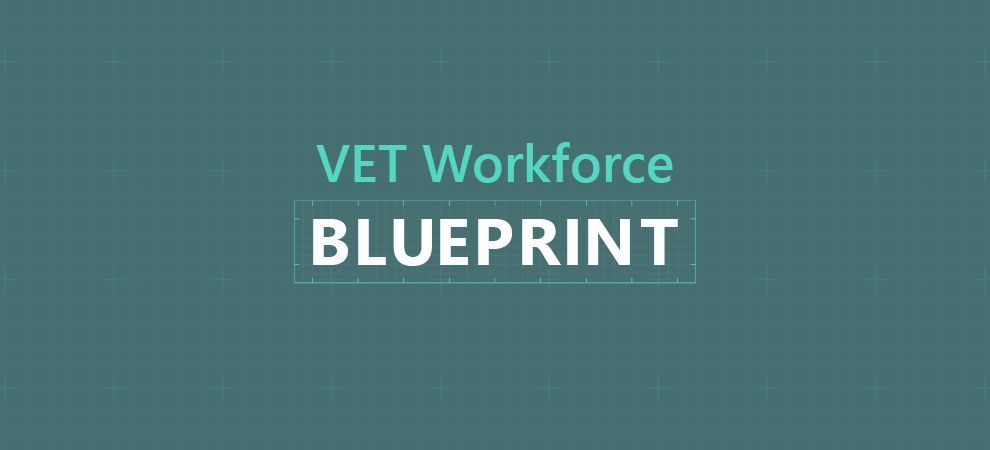
The Department of Employment and Workplace Relations is excited to announce the release of the VET Workforce Blueprint. This strategic initiative aims to tackle the challenges faced by the Vocational Education and Training (VET) workforce, providing a comprehensive national roadmap for its long-term sustainability. Insights from Consultations The development of the Blueprint was greatly informed by the valuable knowledge, insights, and experiences shared during extensive consultations with stakeholders across the VET sector. Their input has been pivotal in shaping a document that identifies a range of opportunities and actionable strategies to enhance the attraction, retention, and capability of the VET workforce. Key Goals of the Blueprint The VET Workforce Blueprint sets out several critical goals: Grow the Workforce: Increasing the number of individuals entering the VET sector to ensure a steady supply of qualified staff capable of delivering quality training. Retain and Develop the Workforce: Fostering an environment that enhances retention rates and supports the ongoing professional development of the workforce, thus ensuring a highly skilled and sustainable VET sector. Understand the Workforce: Establishing robust data collection systems to better understand the diverse roles and pathways within the VET landscape. To achieve these goals, the Blueprint outlines eight opportunities and fourteen actions designed to address the various barriers to workforce attraction, retention, and development. This document will be reviewed regularly to ensure it adapts to the evolving needs of the VET sector and the broader economy. National Actions to Support the Blueprint In conjunction with the Blueprint's launch, the Australian Government, in collaboration with states and territories, has announced a foundational suite of national actions aimed at strengthening the VET workforce. These actions include: Occupational Mapping: Identifying and mapping the various roles within the VET workforce. VET Workforce Data Strategy: Developing strategies for better data collection and analysis concerning the VET workforce. Ongoing Research Program: Establishing a research initiative to address key workforce issues. Compliance and Administrative Burden Analysis: Mapping and analysing current compliance burdens to identify strategies for reduction. These initiatives are designed to allow for flexible responses that can be tailored to local, regional, and industry-specific needs. Industry-Led Responses To further support the implementation of the Blueprint, the government has allocated $12 million to Jobs and Skills Councils (JSCs) for industry-led initiatives. This funding enables JSCs to identify and address specific VET workforce challenges faced by the industries they represent. The efforts of these councils will complement the actions outlined in the Blueprint, ensuring a coordinated approach to workforce development. Foundation for Future Research The Blueprint is backed by the VET Workforce Study conducted by Jobs and Skills Australia, which provides a comprehensive evidence base. This study profiles the current VET workforce, detailing its size, composition, and transitions, and sheds light on key job roles and pathways within the sector. The VET Workforce Blueprint is a significant step forward in ensuring the long-term sustainability of Australia’s VET sector. By focusing on workforce growth, retention, and understanding, the Blueprint aims to build a robust foundation for high-quality vocational education and training. For more details and to access the Blueprint, please visit the Department of Employment and Workplace Relations' website at www.dewr.gov.au/vet-workforce-blueprint.

The Department of Employment and Workplace Relations (DEWR) is revising the Standards for Registered Training Organisations (RTOs) 2015 (the Standards) with the aim of providing greater clarity for RTOs and regulators, strengthening the focus on quality outcomes for learners and employers, and allowing for more flexibility and innovation in training delivery. In May 2024, Skills and Workforce Ministers agreed to progress the Standards for public release in August 2024 and for them to come into full regulatory effect from 1 July 2025. The draft revised Standards propose significant changes to the structure and content of the Standards, providing a clearer and more direct link between the requirements RTOs are expected to meet and the outcomes they are expected to deliver. The draft revised Standards also include monitoring and evaluation of RTO practices and strengthened requirements relating to continuous improvement. Quality outcomes and sustained compliance with the Standards are achieved when RTOs systematically monitor and evaluate their performance and continuously improve. This aligns with moving the sector towards self-assurance. The draft revised Standards released by DEWR on 16 October 2023 were refined in preparation for piloting. Initial piloting was conducted by DEWR in late 2023 to test the practical interpretation of the draft revised Standards to ensure they will support effective regulation. Further engagement and testing activities will be undertaken by ASQA after the Standards are publicly released in August 2024. ASQA will conduct additional pilot activities after the revised Standards are finalised and released. You can read more about the revision of the Standards for RTOs on the DEWR website under Quality Reforms . You can also stay up to date with ASQA’s plans on our Preparing for implementation of revised Standards webpage .

In a recent report, the Australian Manufacturing and Skills Alliance (AUSMASA) has highlighted the critical need for an additional 72,000 skilled workers across the automotive and mining sectors by 2027. This revelation highlights the importance of a coordinated effort to address workforce gaps that could significantly impact the Northern Territory's economic future. The Northern Territory is well-positioned to play a crucial role in meeting this national demand, given its rich resources and strategic importance in the mining and automotive industries. However, the challenge remains in ensuring that there is a skilled workforce ready to support this growth. The skills shortage in these sectors not only threatens to stall development projects but also risks undermining the competitiveness of the Northern Territory on a national and global scale. ISACNT recognises the importance of this issue and is committed to working with industry partners, educational institutions, and government bodies to develop and implement strategies that will enhance the skills and capabilities of the Territory's workforce. Through targeted training programs, industry engagement, and strategic workforce planning, ISACNT aims to support the growth of a skilled workforce that can meet the needs of these vital industries. “Building on our Initial Workforce Plan, this latest iteration includes deeper industry-level workforce data on demographics and future projections, coupled with existing vocational education and training (VET) data on specific training packages,” says Dr Lind, emphasising the need for a data-driven approach to workforce planning. The report by AUSMASA also stresses the importance of collaboration in overcoming the skills shortage. "Collaboration between industry stakeholders and educational institutions is essential to bridge the skills gap and ensure a skilled workforce capable of supporting the net zero electrification transition," Dr Lind adds. ISACNT is actively exploring opportunities to work closely with local businesses and training providers to create pathways that will enable Territorians to gain the necessary qualifications and experience. As the Northern Territory continues to attract investment in mining and automotive sectors, it is imperative that we also focus on building a sustainable and skilled workforce. By addressing the current and future skills shortages, we can ensure that the Northern Territory remains a key player in these industries, contributing to the broader economic growth of Australia. ISACNT is dedicated to playing a leading role in this endeavour, ensuring that the Territory's workforce is prepared to meet the challenges and opportunities that lie ahead.
